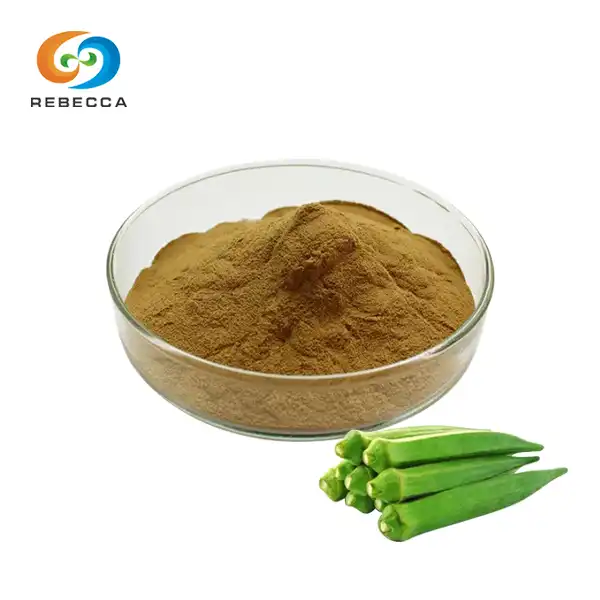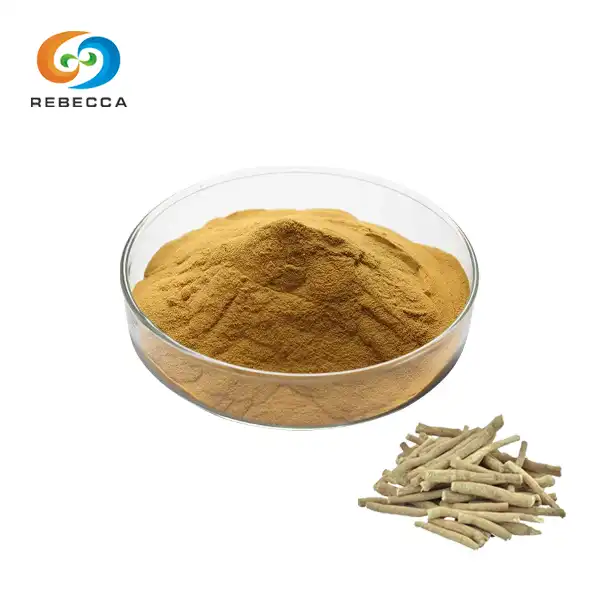What is the difference between natural and synthetic capsaicin?
Capsaicin, the compound responsible for the spicy sensation in chili peppers, exists in both natural and synthetic forms. Natural capsaicin is extracted directly from chili peppers, primarily from the Capsicum genus, through various isolation methods. synthetic capsaicin, also known as nonivamide or PAVA, is produced through chemical synthesis in laboratory conditions. While both forms share similar molecular structures and biological activities, they differ in their production methods, purity levels, and cost-effectiveness. Natural capsaicin often contains various capsaicinoid analogs, while synthetic versions typically consist of a single, pure compound. The choice between natural and synthetic capsaicin depends on the intended application, required purity specifications, and economic considerations. Understanding these differences is crucial for manufacturers and researchers in pharmaceutical, food, and agricultural industries.

What is the difference between the production processes?
The production of natural capsaicin involves agricultural cultivation followed by extraction processes. Chili pepper plants require specific growing conditions, including appropriate temperature, soil composition, and moisture levels. The peppers undergo harvesting at peak ripeness to ensure optimal capsaicin content. The extraction process typically begins with drying and grinding the peppers into a fine powder. Various extraction methods include solvent extraction, supercritical fluid extraction, or enzymatic extraction. These processes separate capsaicin from other plant compounds while maintaining its natural molecular structure.
Modern extraction techniques employ sophisticated equipment to optimize yield and purity. The extracted material undergoes multiple purification steps, including filtration, crystallization, and chromatographic separation. Quality control measures monitor the concentration of capsaicin and related capsaicinoids throughout the process. Environmental factors during cultivation can affect the final capsaicin content, leading to variations in natural extracts. Storage conditions must be carefully controlled to preserve the stability of the extracted compounds.
The cultivation of chili peppers for capsaicin extraction requires extensive agricultural expertise. Soil preparation includes proper nutrient balance and pH adjustment to optimize plant growth. Irrigation systems provide consistent moisture levels throughout the growing season. Pest management strategies protect crop yield and quality. Harvest timing significantly influences capsaicin content and extraction efficiency.

Post-harvest handling procedures maintain pepper quality before extraction. Drying processes remove moisture while preserving active compounds. Size reduction operations prepare material for efficient extraction. Storage facilities control temperature and humidity to prevent degradation. Quality assurance programs monitor raw material specifications.
Synthetic capsaicin production follows a different pathway through chemical synthesis. The process begins with readily available chemical precursors and proceeds through multiple reaction steps. Synthetic routes typically involve condensation reactions between vanillylamine and appropriate acid chlorides or carboxylic acids. The reaction conditions require precise control of temperature, pressure, and catalyst concentrations. Modern synthetic methods emphasize green chemistry principles and efficient production techniques.
Quality control in synthetic production focuses on reaction efficiency and product purity. Analytical methods verify the chemical structure and absence of unwanted byproducts. The synthetic process allows for consistent production regardless of seasonal or environmental factors. Scale-up capabilities enable large-volume production while maintaining quality standards. Advanced reaction monitoring systems ensure reproducible synthesis conditions.
Laboratory scale development optimizes reaction parameters before production scale-up. Process safety assessments evaluate potential hazards and control measures. Waste management systems handle byproducts and unused reagents. Environmental monitoring ensures compliance with emissions regulations. Quality management systems document all aspects of production.
What are the differences in the chemical structures of natural and synthetic capsaicin?
Natural capsaicin exists as a mixture of closely related compounds known as capsaicinoids. The primary compound features a vanillyl group connected to a fatty acid chain through an amide linkage. The natural form contains specific stereochemistry and may include minor structural variants. These variations result from biological synthesis pathways in pepper plants. Analytical techniques reveal the presence of multiple capsaicinoid compounds in natural extracts.
The molecular configuration of natural capsaicin influences its biological activity. The arrangement of functional groups determines interaction with pain receptors and other physiological targets. Natural extracts contain compounds with varying chain lengths and degrees of unsaturation. These structural differences contribute to the complex sensory profile of natural capsaicin products. Advanced spectroscopic methods enable detailed structural characterization of natural capsaicinoids.
Chromatographic analysis identifies individual capsaicinoid components. Mass spectrometry provides molecular weight confirmation and structural information. Nuclear magnetic resonance spectroscopy reveals detailed molecular architecture. X-ray crystallography studies examine three-dimensional structure. Thermal analysis techniques evaluate stability characteristics.

Synthetic capsaicin maintains the core structural features while providing precise control over molecular composition. The synthetic version typically consists of a single molecular species with defined stereochemistry. Chemical synthesis allows modification of specific structural elements to optimize desired properties. The purity of synthetic capsaicin facilitates standardization in commercial applications. Structure-activity relationships guide the design of synthetic analogs with enhanced characteristics.
Molecular modeling techniques help understand structure-based differences between natural and synthetic forms. The spatial arrangement of atoms influences binding properties and biological effects. Chemical stability studies examine structural changes under various environmental conditions. Modern analytical methods provide detailed comparison of natural and synthetic molecular features.
Computational chemistry tools predict molecular properties and interactions. Quantum mechanical calculations examine electronic structure details. Molecular dynamics simulations investigate conformational behavior. Structure-based drug design principles guide modification strategies. Physical property predictions support formulation development.
Is there a significant difference in the performance?
Performance differences between natural and synthetic capsaicin manifest in various applications. Pharmaceutical applications often prefer synthetic capsaicin for its consistent purity and dosage control. Clinical studies demonstrate comparable effectiveness in pain management applications. The standardized nature of synthetic capsaicin supports reliable formulation development. Quality assurance procedures validate performance characteristics across different production batches.
Pharmaceutical formulation development considers bioavailability factors. Dissolution testing evaluates release characteristics in various media. Stability studies examine shelf-life under different storage conditions. Clinical trials compare therapeutic effectiveness between forms. Regulatory submissions require detailed characterization data.
Food industry applications reveal subtle differences in flavor profiles and heat sensation. Natural capsaicin provides complex taste characteristics derived from multiple compounds. Synthetic versions deliver precise heat levels without flavor variation. Stability studies show similar shelf-life characteristics under proper storage conditions. Application testing evaluates performance in different food matrices and processing conditions.

Sensory evaluation panels assess taste and heat perception differences. Food safety testing ensures compliance with regulatory requirements. Processing stability studies examine heat and pH effects. Packaging compatibility testing validates storage conditions. Shelf-life studies monitor quality parameters over time.
Agricultural and pest control applications utilize both forms effectively. Natural capsaicin offers environmental compatibility advantages in certain situations. Synthetic versions provide cost-effective solutions for large-scale applications. Field trials compare efficacy under various environmental conditions. Regulatory compliance considerations influence choice between natural and synthetic forms.
Environmental impact assessments evaluate ecological effects. Biodegradation studies examine environmental persistence. Toxicology testing ensures safety for non-target organisms. Application method development optimizes delivery systems. Cost analysis compares economic factors between forms.
Rebecca——Synthetic Capsaicin Supplier
Rebecca has established itself as China's leading manufacturer of synthetic capsaicin, maintaining high quality standards while offering competitive pricing. The company's annual production capacity of 24 tons of nonivamide demonstrates significant manufacturing capabilities. Advanced production facilities ensure consistent product quality meeting international standards. Quality control systems monitor every aspect of the manufacturing process.
The company's expertise in synthetic capsaicin production serves diverse market applications. Technical support services assist customers with product implementation requirements. Manufacturing processes comply with regulatory requirements and industry standards. Prospective customers interested in synthetic capsaicin products can obtain detailed information by contacting information@sxrebecca.com. The company's commitment to quality and customer service supports successful business relationships.
Research and development activities support continuous product improvement. Manufacturing facilities utilize current Good Manufacturing Practice standards. Quality management systems ensure batch-to-batch consistency. Technical documentation supports customer applications. Customer service teams provide comprehensive support.

References
1. Journal of Agricultural and Food Chemistry, "Capsaicin: Properties and Production Methods", 2023.
2. Chemical Reviews, "Synthesis and Applications of Capsaicinoids", 2023.
3. Natural Products Research, "Analysis of Natural Capsaicin Compounds", 2022.
4. Food Chemistry, "Comparative Study of Natural and Synthetic Capsaicin", 2023.
5. Pharmaceutical Research, "Capsaicin in Drug Development", 2023.








